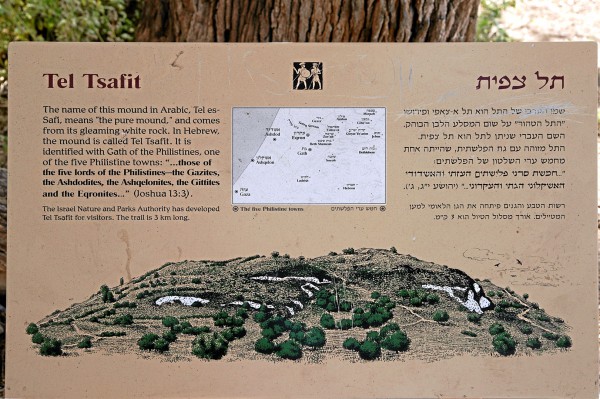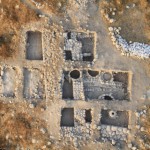“Then David ran and stood over the Philistine and took his sword and drew it out of its sheath and killed him, and cut off his head with it. When the Philistines saw that their champion was dead, they fled. The men of Israel and Judah arose and shouted and pursued the Philistines as far as the valley, and to the gates of Ekron. And the slain Philistines lay along the way to Shaaraim, even to Gath and Ekron.” (Samuel 17:51–52)
Archaeological work on the fortress city of Gath has revealed that it was a truly large city. This was the home of Goliath, who tried to intimidate the Israelite people—and no doubt the sheer size of the city itself was a daunting sight.
A Bar-Ilan University archaeology team tackling Tel Tzafit, the multi-layered dig site in the Judean foothills between Jerusalem and Ashkelon where the city of Gath once stood, has found the city’s monumental main gate. (Times of Israel)
While digging trenches, they also found the top surface of the walls surrounding the city. According to dig-team leader Aren Maeir, the walls are so massive, it may take several seasons to uncover them.
“Many lines of megalithic stone are appearing, with nice corners, features and even mud bricks,” he said. (Daily Mail)
In addition to the city’s wall, a Philistine temple near the city gate, and an iron production facility, the team found at the site ironwork and pottery that indicate the influence of Israelite styles.
“This mirrors the intense and multifaceted connections that existed between the Philistines and their neighbors,” Maeir said.
Gath’s strong presence, four times larger than the Jerusalem of ancient Israel, blocked the growth westward of the Israelite kingdom under David and Solomon, Maeir stated. (Bible Odyssey)
It was one of five ancient Philistine cities, the others being Ekron, Gaza, Ashdod and Ashkelon. Its huge fortifications show that “it’s clearly the most important city of the 10th and ninth centuries.”
When King Hazael of Aram Damascus destroyed Gath around 830 BC, the balance of power in the region shifted to allow other civilizations—including the Judean kingdom—to rise. (Haaretz)
Excavations reveal the Aramean king’s siege system that came against this city.
Although the Iron Age site has been excavated since 1899, archaeologists have only realized in the past few decades how massive the site was.
Tel Zafit National Park excavation efforts have been something of an international affair with Israeli teams, and teams from Yeshiva University, the University of Kansas, Brigham Young University, Grand Valley State University of Michigan, University of Melbourne, University of Manitoba, and a number of universities from Korea and other countries participating.















